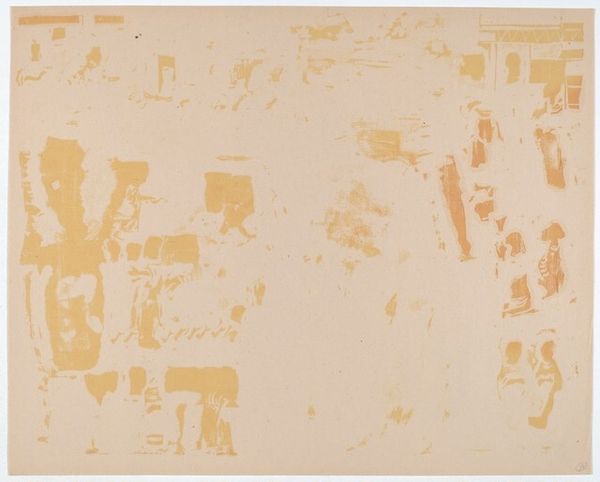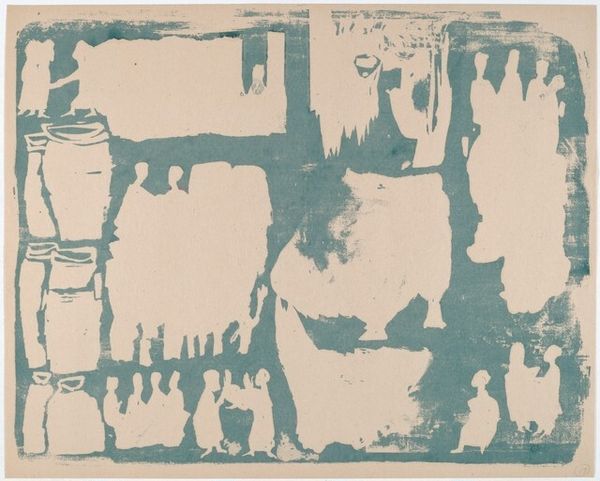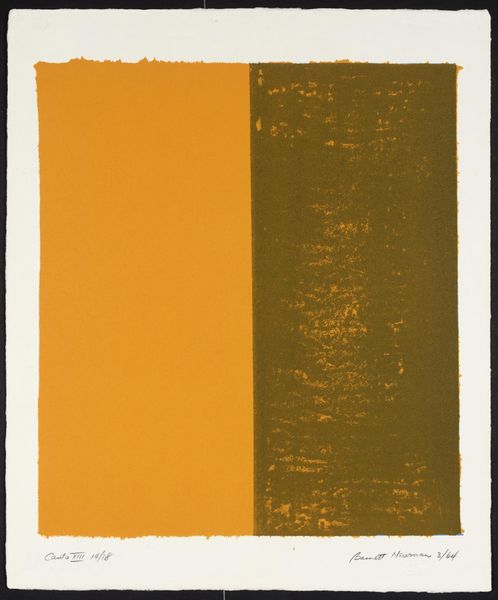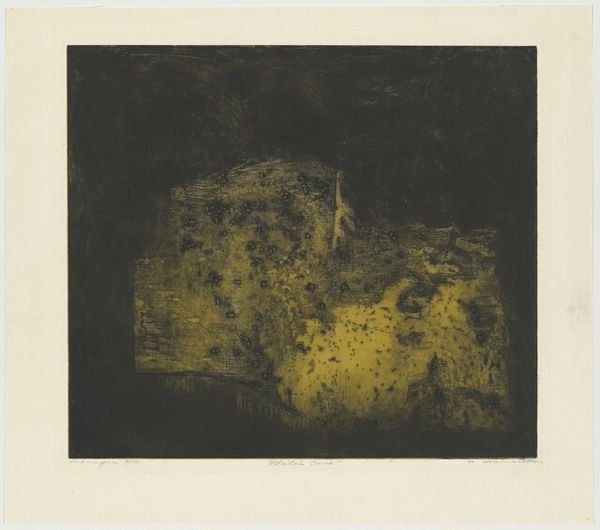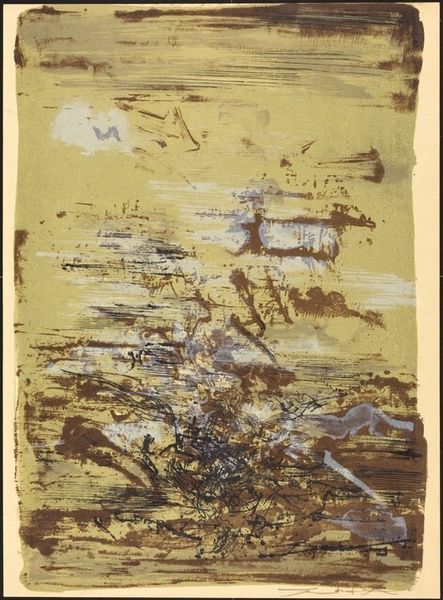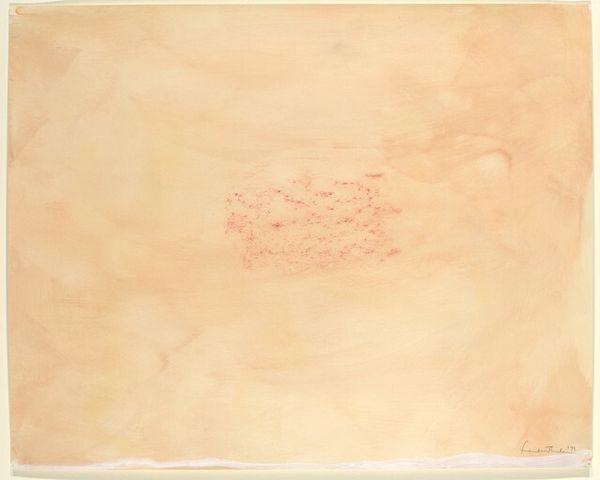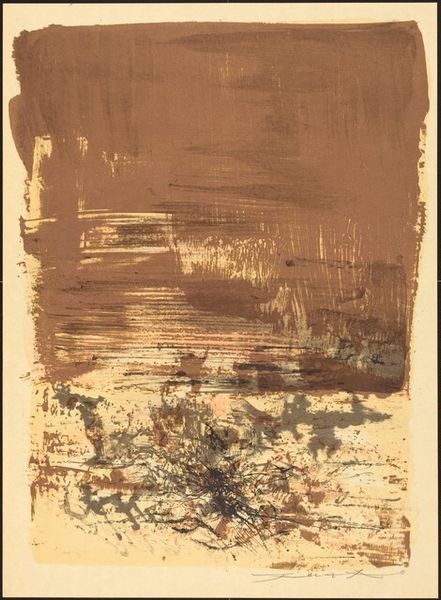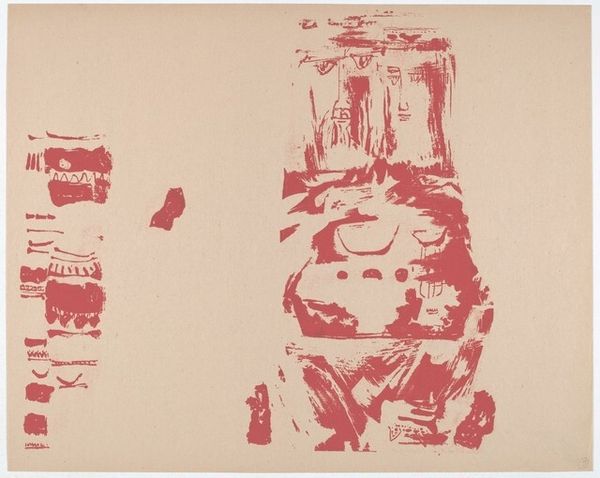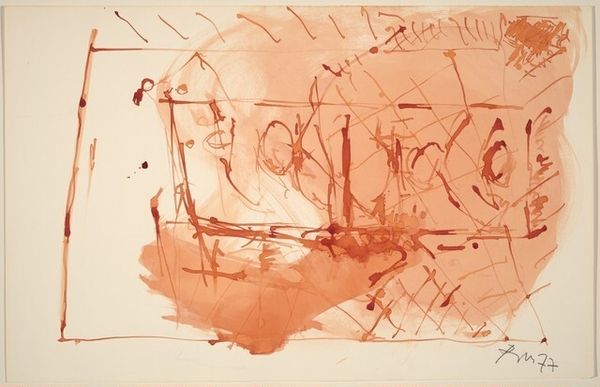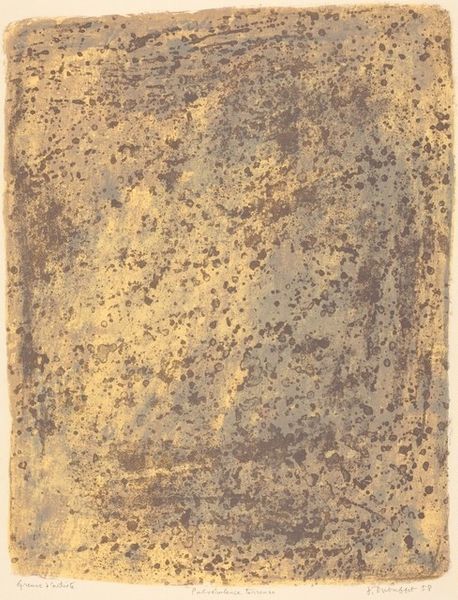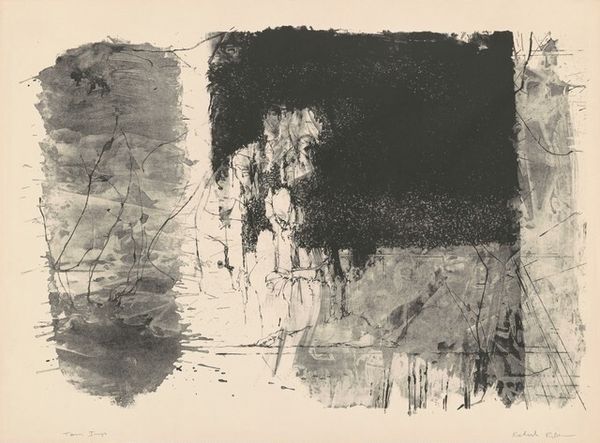
#
abstract-expressionism
#
abstract expressionism
# print
#
linocut print
#
monochrome
Copyright: National Gallery of Art: CC0 1.0
Editor: We’re looking at Corita Kent's "The Beginning of Miracles: III," a linocut print from 1953. It’s abstract and the textures create a sense of depth even though it’s a monochrome print. What kind of narrative do you think these abstracted forms are telling? Curator: Well, it certainly resonates with the artistic exploration of the post-war era, doesn't it? The title itself, "The Beginning of Miracles," suggests a sense of hope and renewal. What kind of visual language speaks to this optimism, this "beginning," for you? Editor: I suppose the roughness, the imperfections in the print, feels like something raw and new being formed. But how does it relate to the miracles suggested in the title? Curator: Think of symbols often associated with miracles: light breaking through darkness, seeds sprouting, or even just unexpected acts of kindness. Are any of these visually suggested here through form and color? Consider how religious iconography or personal, abstract symbolism can influence our interpretation. What sort of symbolic association do you think Kent was building upon here? Editor: The blocks of light… maybe those represent the light breaking through? Or seeds buried. The repetition gives a sense of possibility. Curator: Exactly! Consider, also, that Kent was a Catholic nun and designer in a time of social change. The combination of her religious faith and a love for pop culture really came out in her work, her attempt to link miracles with the commonplace. What remains most striking for me is how abstraction allows her to communicate a deeply spiritual idea. Editor: That makes me rethink the whole piece, realizing it isn’t random. I’m grateful for the discussion around abstract symbols, since these can be often missed in a work like this!
Comments
No comments
Be the first to comment and join the conversation on the ultimate creative platform.
